 About GamePeople
About GamePeople
Subscribe to the Story Gamer column:![]() RSS or
RSS or
![]() Newsletter.
Newsletter.
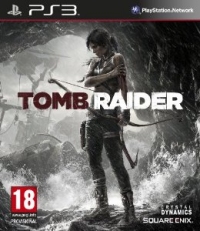
Format:
PS3
Genre:
Adventuring
Style:
Singleplayer
Thirdperson
Competitive
Buy/Support:
Support Mark, click to buy via us...
Other GamePeople columnists have reviewed this from their perspective - huh?:
Novel Gamer (PS3)
Reporting Gamer (360)
Novel Gamer (360)
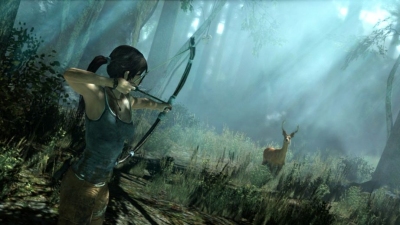
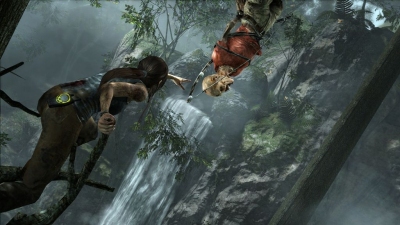
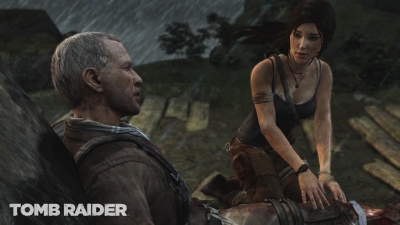
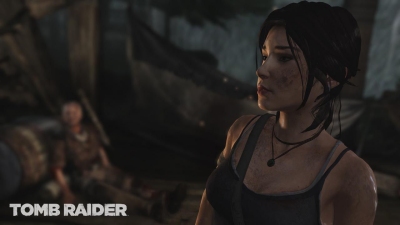
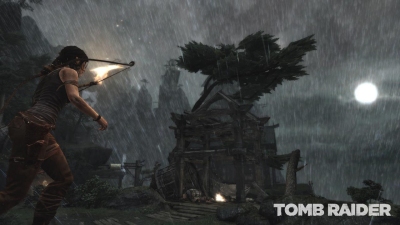
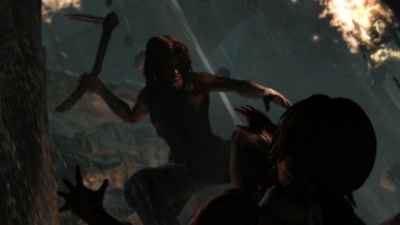
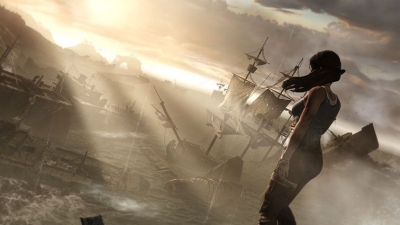
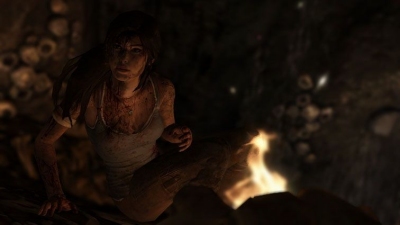

Further reading, films and books that create similar stories:
Tomb Raider PS3 introduces a new Lara Croft who isn't the heroine you used to know, but may well be the right Lara Croft for 2013.
Let me explain about me and Lara Croft.
Many, many, many years ago, my first long term relationship broke up, and I did the only sensible thing for a man in his early twenties to do when his world exploded.
I bought a Playstation.
I'd never had a console before, and had spent most of the nineties playing ancient Atari ST games, but this new era of consoles with its 3D graphics looked amazing, and one of the most amazing games seemed to be Tomb Raider. So I bought that too.
Although the connection was rarely made, even at the time, for me Lara Croft was a 32-bit successor to developer Core Design's earlier Indiana Jones knock-off, the cartoony 2D hero Rick Dangerous.
However, while Lara shared Rick's compelling 1930s film serial world of trap-filled catacombs and wandering killer mummies, Lara wasn't a humorous pastiche of the archeologist explorer archetype.
Leaving aside Lara's status as polygonal 1990s sex symbol - I was too old to have an adolescent infatuation with a videogame character by the time the first game came out - Lara's appeal was that she took the archetype of the indomitable hero, whose curiosity and spirit of adventure drove them to fearlessly overcome countless obstacles and threats, and polished it, purified it, sharpened it into a character who was arguably one-dimensional, but undeniably appealing.
Lara's ruthless intensity, steely demeanour, acrobatic skills and unwavering willingness to blow away any threat with her twin pistols don't make for everyone's idea of a role model or feminist icon, especially when those guns are turned on endangered species, but there's something potent in those traits, especially anchored to a female character.
In a complex world full of anxieties, Lara just does what she wants, and goes for what she wants, regardless of the opinions or objections of the world at large. There's an aspect to that attitude that is antisocial, sociopathic even, but for people - especially girls and young women - capable of tripping themselves up with their own hesitancy and timidity, it wasn't that bad an idea to take strength from asking What Would Lara Do?
Lara's character is summed up with iconic intensity in a few short moments of that first game's opening cut scene: having climbed above two great stone doors in the Andes, a cloaked Lara pushes an engraving and the doors open. Out of those doors come wolves, first feral eyes in the dark, then slavering beasts who maul Lara's guide to death.
As they attack, Lara throws herself away from the stone, casting aside her cloak and drawing her pistols. She shoots as she falls, landing seamlessly and firing until all the wolves are dead. Then she checks her deceased guide one last time, and walks into the darkness of the tomb, only for the doors to close behind her. Unconcerned by being trapped, she removes her shades and walks on... at which point the player takes over and the adventure proper begins.
Make no mistake, the old Lara is dead and gone.
It's a sequence of startling economy which tells you everything to know about that character, the original Lara Croft.
The Lara Croft in the new Tomb Raider game is not that character, and even though this is a new origin story, by the end of it she still isn't the old, steely remorseless Lara I used to love.
Make no mistake, the old Lara is dead and gone.
Initially that made me a bit sad. As I have established at some verbose length, that Lara meant a lot to me, as I know she did to others.
The change of direction is not really a surprise - in the previous three games Crystal Dynamics, Lara's developers since the collapse of Core, have diluted Lara's psychotic intensity with softer voice acting, a supporting cast of tiresome hangers on for Lara to fret over, and the odd laughable cut scene where she stares at her own guns in horror after blowing some bloke away.
It's considerably less jarring to have a reboot where Lara has been built from the ground up to reflect Crystal Dynamics' desire for a more sympathetic character, rather than bolting those traits on to the old incarnation. It's also hard not to see this as a necessary evolution - the simplicity of old Lara's character was fitting in the bold simplicity of the PS1 era world, where facial expressions and animations were stylised to fit the technology.
Welcome, then, the new Lara, one complex enough to carry a character arc through a game, who can grow and change and learn. Still the daughter of a famous explorer, she is part of an expedition which, thanks to her own theory as to where a lost island kingdom might lie, ends up shipwrecked on said island. Responsible for the danger her friends and colleagues are in, Lara is a smart, capable young woman who has to become a hardened survivor, adventurer and killer if any of them are to escape the island alive.
While the other characters in the expedition are, for the most part, well-drawn and believable, and certainly a great step up from the infuriating Scooby Gang of Tomb Raider: Legend, Lara's real co-star in the game is the island setting. Cut off from the rest of the world by mysterious storms, the island has been the site of shipwrecks for centuries, and generations of residents and castaways have left their mark, their ruins and their secrets upon the island.
A great step up from the infuriating Scooby Gang of Tomb Raider: Legend
There is, to say the least, a strong Lost element to all this, and while it isn't a true open world the island is a stunningly executed and varied location that is cleverly built up as a number of large, self-contained environments, chained together by frantic action sequences through collapsing ruins/bridges/tunnels. The result is that the island feels like a whole, even when broken up into discreet areas.
Progress through these areas parallels Lara's evolution as a character. At the start, she's a terrified but able young woman learning to get to grips with the wilderness and fighting dangerous wild animals - in a lovely call back and contrast to that first game, a group of wolves are a major, scary threat to this younger, less-experienced Lara. By the end of the game, she's a seasoned - but still empathetic and multi-layered - adventurer who has travelled through different kinds of ruins and escalating combat situations, and is capable of dealing with the kind of heightened supernatural threat you'd expect at the end of any of the older Tomb Raider games.
Between that steady beginning and fantastical ending there's plenty of spectacle, and a level of explorable depth that you'd expect from a survival horror or action RPG rather than a Tomb Raider game.
While the quest to save the crew of the Endurance and escape the island has great forward momentum to push Lara onwards, and comes with all the hectic spectacle you'd expect from a contemporary big budget action game, Tomb Raider's best moments are in the more open, less pressured areas, when Lara has opportunity to stop running and start exploring.
The island is littered with collectibles and secrets. All come with XP which allow Lara to level up her skills, and the collection of scrap allows for a similar progression of mods and improvements for her weapons and kit. But aside from these practical matters, its simply fun and involving to search out every letter, every lost GPS key, every treasure in the environment, and every little detail discovered builds up the depth of the world and story.
Melee combat is frantically enjoyable with some brutal finishers.
The most old-school secrets to find are the Optional Tombs - and if someone hasn't created a games blog or podcast within the next year called Optional Tomb, I'll be very disappointed - self-contained environmental puzzles off the beaten track of the main story. These are superbly atmospheric, as Lara squeezes through narrow passages carrying a spluttering torch to reach them, and hark back to the older games with brain teasers that involve as many well-timed jumps as you'd expect, but also substitute more realistic elements like burning barrels and flowing water for the giant stone cogs and switches of old.
What's especially pleasing about all these secrets and collectibles is that they're made to feel attainable to the average player, and as such this is the first game since Arkham Asylum where I've tracked down every hidden object and completed every in-game challenge.
Sure, for some of the later challenges I cheated and consulted an online FAQ for some of the later, more dastardly 'find and shoot the hidden X' type challenges, but a breakdown of each areas challenges on the menu screen and in-game treasure maps to highlight important objects will make most players feel that that elusive 100% completion bonus is tantalisingly within their reach, and a fast travel system actively encourages back-tracking, especially when new abilities allow for entering previously inaccessible corners of earlier areas.
It was while digging deep into the games secrets and tracking down every last item that Tomb Raider had me most engaged, and while Lara's athletic abilities aren't as implausibly superheroic as they used to be, leaping around the environments is fluid and fun.
I found the combat element of the game somewhat less entrancing.
On the one hand, the visceral thrills of shooting and melee combat presented here are a huge improvement on the old Tomb Raider combat system, which largely involved locking on to an enemy, firing like a maniac and jumping around dodging returning fire until the baddy dropped dead.
Lara's first ranged weapon is a bow, which establishes the pseudo-realistic approach to combat here, played from the over-the-shoulder perspective of recent survival horror titles. In fact, with the stealthy approach to getting close to bad guys, the threatening close-up confrontations, and the need for ammo conservation, Tomb Raider often feels more like authentic survival horror than the last couple of Resident Evils. Weapons, including the bow, are visceral and satisfying, and melee combat is frantically enjoyable with some brutal finishers.
That's the positive. Now the other hand, the one that clenches in frustration when exploration later in the game is slowed down by having to fight through another dozen cultist goons charging in from all sides. While initially fun, combat gets grinding when it builds to wave after wave of the same enemies, especially when an objective is in sight. At those points, combat becomes a nuisance rather than a joy.
Narratively, Lara only kills because she has to, but this jars with a gore-hungry approach to rewarding the player.
Then there's the disjunct between what the game is telling us about Lara's character development, and the in-game experience and feedback of combat. Narratively, Lara only kills because she has to, and finds it traumatic, but this jars horribly with a gore-hungry approach to rewarding the player.
'We don't have to do this!' bellows Lara over the sound of gunfire, desperate for a peaceful solution.
'Headshot 30XP+!' replies the game excitedly as an arrow enters an enemies head. The rewards for executing gory finishers up close contrast even more hilariously with Lara's supposed restraint and humanity.
It's also a shame that the game does go for such gory enemy deaths, as well as such oppressive, voyeuristically lingering on Lara's injuries at various points in the story, as it makes for an unnecessarily 18 rated game. I can't remember what the ratings were for the original PS1 Tomb Raiders, but they were more or less suitable for all but the most sensitive of adventure-hungry ten year olds.
The harshness of this new game, which is viscerally effective but largely irrelevant to its most enjoyable moments, represents another franchise turning its back on a wider spread of ages in favour of targetting adults only. It's a shame, and deeply reductive at the moment the series is trying to expand its audience.
Throughout the game, it's the big budget, linear set pieces aimed at the blockbuster action crowd that let Tomb Raider down as an experience. Hectic, lavish looking sequences where Lara runs through exploding stuff while occasionally jumping, or slides down rivers or ravines where spikes indiscernible from all the other stuff on screen go through her skull without warning, are barely interactive spectacles that look nice but descend into trial and error repetition as you try to work out which direction to jerk in when in response to automated threats.
The new Lara is a compelling heroine in her own right.
The game also steps away from its strong central movement and combat mechanics with standalone sequences - mostly at the start and end of the game - that are mostly cinematic cut scenes with the odd Quick Time Event (a Simon Says moment where the game asks you to hit a button really quickly) to remind the player that they're still involved.
Frankly, I'd rather all those explosive dashes and barely interactive cinematics had been ditched in favour of some short, snappy cutscenes linking the main playable areas.
Taking the player away from a good control scheme they're honing their skills with is a horrible trend, and in this case bitterly ironic, as these flashy scenes are doubtless part of the reason Tomb Raider is currently failing to recoup its huge budget.
The game might have been more profitable, and at the very least no less enjoyable, if they'd ditched the barely playable spectacle and concentrated on the (no pun intended) core gameplay.
It'd be a shame if the brutal economics and insane sales expectations of big budget game development were to kill this incarnation of Tomb Raider at birth, rendering this game a one-off. There's a lot to love here, and the game ends on a note ripe with promise.
This isn't the old Lara Croft, nor is it an old style Tomb Raider game. While I loved those, the new Lara is a compelling heroine in her own right, and this game has depths and details to explore the simpler adventures of the PS1 era could never even imagine. In this new form, the simple pleasures of leaping into an unknown world of exotic sights and dusty, ancient ruins remain as compelling as ever.



Mark Clapham writes the Story Gamer column.
"I love a good story. Games tell many different stories: the stories told through cut scenes and dialogue, but also the stories that emerge through gameplay, the stories players make for themselves."
Here are the games I've been playing recently:
© GamePeople 2006-13 | Contact | Huh?

|
Family Video Game Age Ratings | Home | About | Radio shows | Columnists | Competitions | Contact
With so many different perspectives it can be hard to know where to start - a little like walking into a crowded pub. Sorry about that. But so far we've not found a way to streamline our review output - there's basically too much of it. So, rather than dilute things for newcomers we have decided to live with the hubbub while helping new readers find the columnists they will enjoy. |
Our columnists each focus on a particular perspective and fall into one of the following types of gamers:
|